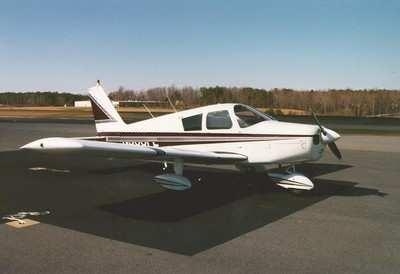Pilot Simulating Power-Off Landing Landed Short, Hit A Hidden
Object
Consider this a story that things aren't always what they appear
to be. A flight instructor who thought it would be ... instructive
... to allow his BFR candidate to land short of the runway during a
simulated power-off landing wound up with a damaged airplane, and
probably ego as well. Fortunately, the airplane was the only thing
damaged in this incident. Both of the pilots walked away
uninjured.

NTSB Identification: WPR12LA087
14 CFR Part 91: General Aviation
Accident occurred Friday, January 27, 2012 in Chehalis, WA
Aircraft: PIPER PA-28-140, registration: N15791
Injuries: 2 Uninjured.
This is preliminary information, subject to change, and may
contain errors. Any errors in this report will be corrected when
the final report has been completed.
On January 27, 2012, about 1210 Pacific Standard Time, a Piper
PA-28-140, N15791, impacted an object protruding from the terrain
when the pilot landed short of the runway at Chehalis Airport,
Chehalis, Washington. The commercial pilot, and the certified
flight instructor who was giving him a flight review, were not
injured, but the airplane, which was owned and operated by the
pilot, sustained substantial damage. The 14 Code of Federal
Regulations Part 91 flight review, which departed the same airport
about 90 minutes prior to the accident, was being operated in
visual meteorological conditions. No flight plan had been
filed.
According to the pilot, who was acting as pilot-in-command
because his previous flight review was still current, he was
executing a simulated power-off landing as part of his current
flight review. Because he failed to manage his glide profile in a
manner that allowed him to extend the airplane's glide all the way
to the approach end of the runway, and since he elected not to add
engine power, the airplane touched down in a grassy area a little
over 300 feet short of the runway threshold. The pilot then
continued the landing roll over the grassy area, across the
threshold, and onto the paved runway surface. Although neither the
pilot nor the instructor realized that the airplane had impacted an
object, later, after the pilot had returned to his home base, he
noticed a dent protruding upward from the top skin of the
stabilator. He therefore looked at the underside of the stabilator,
and discovered a punctured/torn area that required replacement of
stressed skin in an area greater than six inches across.
Piper Cherokee 140 File Photo

Airport personnel later checked the area off the approach end of
the runway, and found a piece of bent over rebar protruding from
the terrain just over 300 feet from the runway threshold. Tire
tracks in the grass revealed that the airplane's wings had just
cleared the rebar and that the main landing gear had contacted the
surface about 10 feet past it. The rebar, the top portion of which
was painted white, was protruding about a foot and a half above the
ground. It had been placed there to mark the location of a portion
of a future approach lighting system.
According to the FAA Inspector who went to the scene of the
accident, the rebar was located about 100 feet beyond the boundary
of the Runway Safety Area at the non-controlled airport. The same
inspector reported that the flight instructor stated that he did
not suggest to the pilot that he add power because it appeared to
him that the grassy area was clear, and because he thought the
pilot would learn a good lesson by landing short.
 ANN's Daily Aero-Linx (04.15.24)
ANN's Daily Aero-Linx (04.15.24) Classic Aero-TV: 'No Other Options' -- The Israeli Air Force's Danny Shapira
Classic Aero-TV: 'No Other Options' -- The Israeli Air Force's Danny Shapira Aero-News: Quote of the Day (04.15.24)
Aero-News: Quote of the Day (04.15.24) Airborne 04.16.24: RV Update, Affordable Flying Expo, Diamond Lil
Airborne 04.16.24: RV Update, Affordable Flying Expo, Diamond Lil ANN's Daily Aero-Term (04.16.24): Chart Supplement US
ANN's Daily Aero-Term (04.16.24): Chart Supplement US




